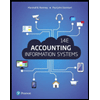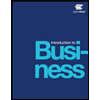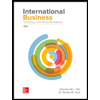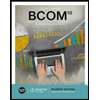Assessment 1 - Australian Post
.docx
keyboard_arrow_up
School
Queensland University of Technology *
*We aren’t endorsed by this school
Course
105
Subject
Business
Date
May 9, 2024
Type
docx
Pages
12
Uploaded by PrivateKudu3534 on coursehero.com
Business Context Report
Name:
Student No:
Unit:
Tutor:
Date:
Word count:
Cayden Cooper
N11607947
BSD105
Michael Klaehn
12/04/2024
1500
Introduction:
In the current market landscape where businesses mostly operate in highly conditional and very
dynamic environments, they need to take a step back and discuss some serious and key problems
that might cause them trouble in the long term. The present study aims to investigate Australia Post
which is one of the biggest service providers of mail and logistics in Australia. This report aims to
create an overview of Australia Post's internal environment, and the factors that determine it like the
organization’s structure, competitive dynamics, client portfolio and the way it analyses risks and
opportunities, along with the impact of global circumstances on its operation and provided strategic
recommendations to help Australia Post may confront every obstacle and execute more efficiently its
roles, thus paving the way for a winning position among competitors.
Internal Business Context:
1. Business Ownership and Organisational Structure:
Under the Australian Postal Corporation Act of 1989, Australia Post, which was founded in 1809,
functions as a government-owned company. Being fully owned by the Australian Government,
Australia Post has a distinctive ownership structure as a statutory corporation. This ownership
structure is in line with Australia Post's dual goals of serving all Australians with critical postal
services and running a profitable business. The Board of Directors, which is in charge of the
organization's management and strategic direction under the guidance of the CEO, is what defines its
organizational structure. The organization's purpose to provide dependable and reasonably priced
postal services while pursuing financial sustainability is in line with this structure, which maintains a
balance between public service obligations and commercial ambitions.
2. Industry and Core Product/Services:
Australia post represents the backbones of the postal and logistical scene in Australia which is able to
deliver each and every service from market to buyers, offices to business and even to government by
the footsteps of whole of Australia. Well, be it mail delivery or shopping they’ve got it all covered –
from the delivery of your mail and parcels to running the stores or trading services, sorting digital
communications and even financial. Not only the post offices, sorting centres and delivery hubs,
Australia Post positions across the country work to keep the connection line opened, to support the
businesses and get the neighbourhoods together from the very west edge right to the east. In the
age when there are fewer actual letters in the mailboxes of Australians and the Australian mail is
being rapidly replaced by digital technology, the Australian Postal Service is looking forward to the
future. They do not stand still, they are changing perpetually to satisfy customer demands and they
do not rest on iron integrity with the current e-commerce cosmic score.
3. Customer Profile:
Australia Post serves diverse customer segments, ranging from individuals to large corporations and
governments. With a focus on meeting varied needs, the company offers postal delivery for
individuals and small businesses, while also providing bulk mail and logistics solutions for larger
enterprises and government clients. Leveraging technological advancements since 2014, Australia
Post enhances customer convenience through services like online parcel tracking, cloud-based digital
mailbox solutions, and secure signature document delivery.
4. Competitor Profile:
Going along with the zeitgeist of attached market brokers, Australia Post will be facing competition
from both homegrown as well as offshore players. The major competitors who are privately owned
courier companies such as Toll Group, DHL Express, FedEx, and UPS plus the digital platforms offering
alternative options have brought tough competition in the delivery business. Concurrently, their
competitors will most likely emerge as a threat in terms of service innovation and pricing
competition. However, the country's postal service continues to have a high market share owing to
its wide network coverage, trusted brand reputation, and product diversification strategy. Hence,
Australia Post has formed strategic alliances with either the sector leaders in the e-commerce
business, or with the established players and hence has a strong position in the market.
5. SWOT analysis:
Strengths
Weaknesses
Opportunities
Threats
Trusted Brand
Reputation
Less international
Presence
(Pro, 2019)
Growth of e-
commerce and parcel
delivery
Cybersecurity threats
and data breaches
Strong Customer
relationships and
loyalty
Slowly declining the
amount of traditional
mail being sent
Expansions into new
services and markets
(Pro, 2019)
Environmental
problems, such as the
weather
Financially stable
Environmental impact
of postal operations
Focusing on
environmental
initiatives (Pro, 2019)
Economic crisis
affecting customer
spending
Diversity in products,
and high level of
different services
Overtaking other
postal services that
aren’t Australian Post,
Providing faster and
more effective postal
strategies
Viruses such as
COVID-19 affect in-
store buying.
Variety to do online
and in-person (Pro,
2019)
Some outdated
technology
Growing the business
around customer
feedback
Media trouble such as
wrongful behaviour
getting exposed to a
large range of people
SWOT summary:
Thus, SWOT analysis serves as an internal perspective for Australia Post which can give useful ideas.
Organization's strengths as such as trusted brand spotlight and wide client network are the
important factors for its success in the market. In addition, its sound financial position and its well as
the diverse products and services bank portfolio give it opportunity to expand and innovate. But, of
course, there are major weaknesses to overcome, among others declining the usage of traditional
mail and the negative impact of company’s operations on environmental that will not fail the
company in a long-term period. However, these problems become the factors of opportunities for
Australia Post. The company can take advantage of safe keywords to compete with major IT players.
Understanding the emerging details of the market will bring enormous gains. In addition,
implementing environmental initiatives which people would be eco-friendly. Yet, the corporation
may still suffer from cybersecurity risk, environmental threats, and economic decline and thus, the
contingency measures must be adopted in order to pre-emptively counter these risks while taking
advantage of the opportunities for sustainable success.
External Business Context:
Economic Trends: Economic indicators such as the GDP growth rate and inflation to a greater extent also add up to
parcel volumes statistics. When economic growth is on the rise there is a parallel with a certain
increase of e-commerce, which in turn, tends to raise the parcel demand. However, below-average
economic conditions have similar effects and consumers tend to cut their spending. Technological Advancements: Fast-paced opportunities like automation have completely disrupted the operation of the postal
system. Australia Post must be technology-driven to improve the efficiency of operations and for
enhancing the quality of services. Digital characteristics include the internet, social networking, e-
commerce; threats and, at the same time, opportunities are in it and are crucial for staying at the top
of the pyramid. Regulatory Frameworks: Abiding by postal regulations, data privacy laws, and environmental standards, is a necessity.
Complying with evolving regulations enables the business to retain survival and enhance
competitiveness. Socio-Political Dynamics: People’s demographic shifts and cultural patterns also have an impact on consumers’ behaviour. In
addition to supporting the service offering, which is in tune with a variety of contemporary trends
and processes, aligning services with society and redesigning them with the help of sustainability-
targeted practices contributes to the reputation and competitive position of a brand.
2. PESTLE analysis:
Aspect
Key Points
Political
Postal Regulatory Commission. (2006). Postal Accountability and Enhancement Act of 2006. Ensures regulations and standards for postal services.
European Commission. (2022). EU Competition Policy. Sets guidelines and regulations to maintain fair competition within the European Union.
World Trade Organization (WTO). (2021). Trade Agreements and Tariffs. Oversees international trade agreements and tariff policies globally.
International Trade Administration | Trade.gov. (2024). Australia - Customs regulations. Details customs and trade regulations specific to Australia.
Australian Commission on Safety and Quality in Health Care. (n.d.). Focuses on safety and quality standards in healthcare in Australia.
Economic
World Bank. (2022). International Development, Poverty, & Sustainability. Provides financial and technical assistance for global development projects.
International Monetary Fund (IMF). (2022). Inflation Rates and Economic Outlook. Monitors global economic trends, including inflation rates.
Bank for International Settlements (BIS). (2024). Towards the future monetary system. Discusses future trends in global monetary systems.
Statista. (2023). Consumer Spending and e-Commerce. Provides statistics and trends on consumer spending and e-commerce.
Australian Bureau of Statistics. (2024). Employment and unemployment. Reports on employment and unemployment rates in Australia.
Reserve Bank of Australia. (2024). The outlook for inflation and employment. Analyzes future predictions for inflation and employment in Australia.
Social
Pew Research Center: Internet, Science & Tech. (2023). Closing thoughts on ChatGPT and other steps in the evolution of humans, digital tools and systems by 2035. Explores the impact of AI and digital tools on society by 2035.
eMarketer. (2023). E-commerce Trends. Highlights trends and forecasts in the e-commerce industry.
Forrester. (2023). Forrester helps organizations grow through customer obsession. Offers insights on customer-focused growth strategies.
IDC: The Premier Global Market Intelligence Company. (2021). The State of the Midmarket: Future IT leadership Strategies. Provides insights into future IT strategies for midmarket businesses.
Technological
Gartner. (2024). Top Strategic Predictions for 2024 & Beyond: The Year Everything Changed. Predictions on key technological shifts impacting businesses.
McKinsey & Company. (2024). How we help clients. Details McKinsey's approach and methodologies in helping clients.
Boston Consulting Group (BCG). (2022). Digital, technology, and data. Discusses
the importance of digital transformation and technology in business.
Deloitte Insights. (n.d.). Digital transformation. Offers insights and strategies for
digital transformation initiatives.
Your preview ends here
Eager to read complete document? Join bartleby learn and gain access to the full version
- Access to all documents
- Unlimited textbook solutions
- 24/7 expert homework help
Related Questions
What is educational about the article Wall Street Journal The Secret Oil-Trading Ring That Funds Russia’s War by by Joe Wallace?
What is interesting about the article Wall Street Journal The Secret Oil-Trading Ring That Funds Russia’s War by by Joe Wallace?
What is insightful about the article Wall Street Journal The Secret Oil-Trading Ring That Funds Russia’s War by by Joe Wallace?
Article Link: The Secret Oil-Trading Ring That Funds Russia’s War -
arrow_forward
Evaluate the business management system (BMS) approach adopted by Fujitsu UK and Ireland, in relation to the size and complexity of the business; how may this need to be adapted to provide a suitable approach for an organization in the public sector?
arrow_forward
Cape Town-founded mobility tech startup WhereIsMyTransport has secured R42-million in
funding from Naspers. This investment forms part of R201-million funding round led by Naspers
Foundry, Cathay AfricInvest Innovation Fund, and SBI Investment.
WhereIsMyTransport has secured R42-million in funding from Naspers
Phuthi Mahanyele-Dabengwa, South Africa CEO of Naspers comments on the importance of supporting innovations that address mobility issues.
“Mobility remains an obstacle for billions of people in high-growth markets across the world. Our investment in WhereIsMyTransport is a testimony of our belief that great innovation and tech talent is found in South Africa, and with the right backing and support these businesses can provide solutions to local challenges that can improve the lives of ordinary people in South Africa and abroad.”
WhereIsMyTransport, Founded in Cape Town in 2015, the mobility tech startup maps formals and informal public transport networks and uses this data and…
arrow_forward
Cape Town-founded mobility tech startup WhereIsMyTransport has secured R42-million in
funding from Naspers. This investment forms part of R201-million funding round led by Naspers
Foundry, Cathay AfricInvest Innovation Fund, and SBI Investment.
WhereIsMyTransport has secured R42-million in funding from Naspers
Phuthi Mahanyele-Dabengwa, South Africa CEO of Naspers comments on the importance of supporting innovations that address mobility issues.
“Mobility remains an obstacle for billions of people in high-growth markets across the world. Our investment in WhereIsMyTransport is a testimony of our belief that great innovation and tech talent is found in South Africa, and with the right backing and support these businesses can provide solutions to local challenges that can improve the lives of ordinary people in South Africa and abroad.”
WhereIsMyTransport, Founded in Cape Town in 2015, the mobility tech startup maps formals and informal public transport networks and uses this data and…
arrow_forward
Can I receive assistance with the below two questions, please
PART A: Several years ago, Hurricane Gilbert destroyed thousands of acres of banana in Jamaica. Farmers whose crops were destroyed by the hurricane were much worse off, but farmers whose crops were not destroyed benefited from the hurricane. Why did this occur? What information would you need about the market for bananas in order to assess whether farmers as a group were hurt or helped by the floods?
PART B: Explain why the following might be true: A drought in the Caribbean raises the total revenue that producers receive from the sale of coffee, but a drought only in Grenada reduces the total revenue that Grenadian producers receive.
Ensure that you define any key terms used in your discussion.
arrow_forward
Match each to one of the 5 business environments
Jeffries Roofing: In its proposals, Jeffries Roofing describes the materials to be used and the price. When a customer signs a bid, it becomes an enforceable contract.
Jeffries Roofing: In its proposals, Jeffries Roofing describes the materials to be used and the price. When a customer signs a bid, it becomes an enforceable contract. Open choices for matching
Borders books and music: As customers began downloading digital books and music from the Internet, Borders struggled for years and eventually declared bankruptcy.
Borders books and music: As customers began downloading digital books and music from the Internet, Borders struggled for years and eventually declared bankruptcy. Open choices for matching
Blackberry: When the Blackberry phone system quit working, 70 million customers…
arrow_forward
Developing a risk identification strategy begins by creating a classification scheme for likely risks.With reference to this:2.1 Explain the five common classification clusters of risk. (10)2.2 Describe the methods available for conducting risk factor identification.
arrow_forward
I need a full description of the role of each of these components listed below from 10-18 for " BLOOD PRESSURE THAT IS A WIRELESS, REMOTE MONITORING DEVICE THAT CONNECTS TO A SMARTPHONE APP WITH ACCURATE MEASUREMENTS". And by referring to the below table:
10. Reimbursement: Explain how the product will be reimbursed and any relevant insurance coverage.
11. Business model: Describe the business model for the product, including pricing, distribution, and revenue streams.
12. Marketing and sales: Explain the marketing and sales strategy for the product, including how you plan to reach your target audience.
13. Financial information: Provide financial projections for the product, including revenue, expenses, and profit margins.
14. Exit scenarios: Discuss potential exit scenarios for the product, such as acquisition or IPO.
15. The ask: Outline any funding needs for the product and how the funds will be used.
16. Management team: Introduce the management team and…
arrow_forward
Avoidance is a risk control technique that can be used effectively in a risk management program. Considering this, examine the primary benefits of utilising this technique in a risk management program and comment if it can be used for all organisational risks. Substantiate your response with relevant content.
arrow_forward
The concepts of “shared value” and “inclusive business” provide several opportunities to organisations and their stakeholders. Evaluate the extent to which Netflix is implementing the concepts of “shared value” and “inclusive business”.
Q1. Evaluate the extent to which Netflix is implementing the concepts of “shared value” and “inclusive business” to Netflix. Provide examples to support your answer.
Q2. Propose ways in which Netflix may improve upon their approach to “shared value” and “inclusive business”
arrow_forward
In today’s competitive business environment it has become important forcompanies to be innovative. John, the owner of a local retail store in Sandton(Johannesburg), is considering the adoption of Bitcoin as a payment option forcustomers. The store primarily sells a general range of food products, which includeboth fresh and packaged goods. John has decided to conduct a survey to furtherexplore this opportunity.In the context of the case presented:a. Advise John on the benefits of using a questionnaire.b. List two research objectives that John could explore.
arrow_forward
Risk Managers may use various tools and methods to ensure that the organisation hasan effective Risk Management process, however, there are four primary methodologiesthat are currently being used.
arrow_forward
Requirements
Read the Koss Corporation Case Study Download Koss Corporation Case Study.
Answer the following questions (below).
Questions
Using the Gleim Review reading, specifically study unit 1.4 on Corporate Responsibility for Ethical Behavior, answer the following:
What were some of the factors that led to the fraud within the Koss Corporation?
How could adopting, using, and teaching a Code of Conduct help the culture of this company?
Discuss how understanding of the IMA's Statement on Management Accounting "Values and Ethics", could have helped prevent this situation.
What are the responsibilities of the following entities in this case?
American Express
Park Bank
Sue Sachdeva
Michael Koss
Julie Mulvaney
arrow_forward
Direction: Do what is instructed below. Write your answers in your notebook.
One of the goals of business is to cater the needs and wants of the customers and make
them satisfied of the goods & services that a business provides in order for them to
share their experiences for the growth and sustainability of the business operation.
Now, I want you to create your own product or services that best suits to the needs of
our present situation which we are in the midst of the global pandemic.
Requirement:
Create your own product using the Five (5) Product Levels by Kotler. Use the table below:
Product levels
Question
Product or services you Draw the product you want Drawing here:
Answer
can create and offer to to offer
your customers
bas
Core benefit of the State
the
fundamental
product
benefit that you can offer to
satisfy them
Generic product
State the basic version of the
product
the
features
necessary for it to function
State the product set of
Expected product
features that the…
arrow_forward
With over 300 stores in 40 countries, IKEA is a major international presence in
retail housewares and furnishings. IKEA publishes country-specific catalogues
with local currency prices guaranteed to hold for 1 year.
• IKEA is a multinational retailer of furniture and home goods. Ingvar Kamprad, the
founder of IKEA, was born in 1926 in southern Sweden. IKEA has now become
known worldwide for its innovative and stylish designs.
• Almost all IKEA products are designed to for flat packaging, which reduces
shipping costs, minimizes transport damage, increases store inventory capacity,
and makes it easier for customers to take the furniture home themselves, rather
than needing delivery.
• But the original reason for it was competitive pressure from IKEAs competitors to
their suppliers, who boycotted IKEA, forcing IKEA to do it themselves
• Slack et al., (2011) define the 4 V’s that characterize operations as: volume,
variety, variability, and visibility
arrow_forward
Your task is to read the FINTRAC report and prepare a comprehensive analysis of the financial transactions and sanctions evasion techniques of North Korea. Your analysis should include the following: • An explanation of the indicator’s evasion techniques deployed by North Korea to evade sanctions. • An evaluation of the effectiveness of the sanction’s regime against North Korea, with recommendations for improving it. • A critical assessment of the challenges faced by law enforcement agencies in combating North Korea's illicit financial activities.
arrow_forward
You have been hired as an online business consultant for a new online company. Advise the new company on any 5 different online business models that they should consider.
Discuss any online security threats and how they can be averted in an organisation.
arrow_forward
which one of the approach would best suited for a sport programme use
To enhance Sports development by providing assistance to sports clubs and teams in an area by providing them with the necessary gears and equipment for whichever Sporting disciple that they may part-take in.
arrow_forward
QuestionAfter the analysis of your company Toyota Motor Corporation , please write the following sections in report form:
1.Decision making process
arrow_forward
A relation to this caseA. Develop a risk management programme appropriate for this case (see attached risk management template)
B. Explain how compliance to this risk management programme can prevent the credit risk management issue(s) experienced by Washington Mutual.
C. Discuss the importance of an internal risk assessment and auditing process in relation to this case
arrow_forward
Create a PowerPoint presentation with the following 4 elements:
Provide an overview and discuss the function of 1 publicly financed healthcare program in the United States.
How has that program evolved and influenced the entire U.S. healthcare system?
What are some of the accomplishments and challenges for that program?
What does that program do to focus on health prevention and performance?
arrow_forward
Case One: Information Systems in the Global Economy Wal-Mart, United States
Warehousing and Mining Data on a Grand Scale
One company that really needs to know how to manage data is Wal-Mart. With a total of over800 million transactions per day in over 7,000 stores around the world, Wal-Mart produces moredata in a day than many businesses produce in a lifetime. No matter what size the business,databases and the systems that manage them provide the foundation on which businessdecisions are made.Wal-Mart is successful due to its ability to learn from the data it collects. In a nutshell,Wal-Mart owes its success to its databases and business intelligence tools—software tools thatmanipulate data to provide useful information to Wal-Mart decision makers.At Wal-Mart headquarters in Arkansas, massive amounts of data are collected every dayfrom its stores around the world, and stored in a data warehouse over a petabyte in size—whichis a quadrillion bytes or a million gigabytes. A data warehouse…
arrow_forward
kindly name and discuss (3) points that are internally communicated between the front office and housekeeping in the hotel industry. You should explain each point in two lines including an example.
arrow_forward
In times of Covid 19, XYZ Ltd., a company dealing in car accessories is not happy with their current scenario and want consider alternative approaches. Can you please guide them about what is contingency approach and how will it help them?
arrow_forward
CASE 2
During these difficult times of economic turmoil all over the globe and the unexpected long lockdowns affecting the economy and the citizens at large in very country, there is an idea of developing a mobile application for “anonymous crowdfunding” called “ساعدة)“ pleH) مto help the needy people within the country with their legitimate financial obligations; including utility bills, house rent, educational tuition, and other necessary small loans and necessity installment scheme payments. There are many people amongst us that although earn a fair amount of money but due to unexpected circumstances, cannot manage their finances and need help only once or twice from others but are adament to ask for it due to their social status. In order to help these people out and connect them to the generous people who are willing to help the community with whatever big or small contributions, an application is to be launched for annonymous crowd funding. It will work by connecting the three…
arrow_forward
ANSWER IF THE STATEMENTS IS TRUE OR FALSE THEN EXPLAIN
1.) Before starting your new venture, you should research and develop a decision framework and a business plan which will help you identify primarily the external factors that can affect the business.
2.) Development costs are related to the costs which should be essentially received by resource owners so as to presume that they will continue to supply them in a specific period of time.
arrow_forward
SEE MORE QUESTIONS
Recommended textbooks for you

BUSN 11 Introduction to Business Student Edition
Business
ISBN:9781337407137
Author:Kelly
Publisher:Cengage Learning

Essentials of Business Communication (MindTap Cou...
Business
ISBN:9781337386494
Author:Mary Ellen Guffey, Dana Loewy
Publisher:Cengage Learning

Accounting Information Systems (14th Edition)
Business
ISBN:9780134474021
Author:Marshall B. Romney, Paul J. Steinbart
Publisher:PEARSON


International Business: Competing in the Global M...
Business
ISBN:9781259929441
Author:Charles W. L. Hill Dr, G. Tomas M. Hult
Publisher:McGraw-Hill Education

Related Questions
- What is educational about the article Wall Street Journal The Secret Oil-Trading Ring That Funds Russia’s War by by Joe Wallace? What is interesting about the article Wall Street Journal The Secret Oil-Trading Ring That Funds Russia’s War by by Joe Wallace? What is insightful about the article Wall Street Journal The Secret Oil-Trading Ring That Funds Russia’s War by by Joe Wallace? Article Link: The Secret Oil-Trading Ring That Funds Russia’s War -arrow_forwardEvaluate the business management system (BMS) approach adopted by Fujitsu UK and Ireland, in relation to the size and complexity of the business; how may this need to be adapted to provide a suitable approach for an organization in the public sector?arrow_forwardCape Town-founded mobility tech startup WhereIsMyTransport has secured R42-million in funding from Naspers. This investment forms part of R201-million funding round led by Naspers Foundry, Cathay AfricInvest Innovation Fund, and SBI Investment. WhereIsMyTransport has secured R42-million in funding from Naspers Phuthi Mahanyele-Dabengwa, South Africa CEO of Naspers comments on the importance of supporting innovations that address mobility issues. “Mobility remains an obstacle for billions of people in high-growth markets across the world. Our investment in WhereIsMyTransport is a testimony of our belief that great innovation and tech talent is found in South Africa, and with the right backing and support these businesses can provide solutions to local challenges that can improve the lives of ordinary people in South Africa and abroad.” WhereIsMyTransport, Founded in Cape Town in 2015, the mobility tech startup maps formals and informal public transport networks and uses this data and…arrow_forward
- Cape Town-founded mobility tech startup WhereIsMyTransport has secured R42-million in funding from Naspers. This investment forms part of R201-million funding round led by Naspers Foundry, Cathay AfricInvest Innovation Fund, and SBI Investment. WhereIsMyTransport has secured R42-million in funding from Naspers Phuthi Mahanyele-Dabengwa, South Africa CEO of Naspers comments on the importance of supporting innovations that address mobility issues. “Mobility remains an obstacle for billions of people in high-growth markets across the world. Our investment in WhereIsMyTransport is a testimony of our belief that great innovation and tech talent is found in South Africa, and with the right backing and support these businesses can provide solutions to local challenges that can improve the lives of ordinary people in South Africa and abroad.” WhereIsMyTransport, Founded in Cape Town in 2015, the mobility tech startup maps formals and informal public transport networks and uses this data and…arrow_forwardCan I receive assistance with the below two questions, please PART A: Several years ago, Hurricane Gilbert destroyed thousands of acres of banana in Jamaica. Farmers whose crops were destroyed by the hurricane were much worse off, but farmers whose crops were not destroyed benefited from the hurricane. Why did this occur? What information would you need about the market for bananas in order to assess whether farmers as a group were hurt or helped by the floods? PART B: Explain why the following might be true: A drought in the Caribbean raises the total revenue that producers receive from the sale of coffee, but a drought only in Grenada reduces the total revenue that Grenadian producers receive. Ensure that you define any key terms used in your discussion.arrow_forwardMatch each to one of the 5 business environments Jeffries Roofing: In its proposals, Jeffries Roofing describes the materials to be used and the price. When a customer signs a bid, it becomes an enforceable contract. Jeffries Roofing: In its proposals, Jeffries Roofing describes the materials to be used and the price. When a customer signs a bid, it becomes an enforceable contract. Open choices for matching Borders books and music: As customers began downloading digital books and music from the Internet, Borders struggled for years and eventually declared bankruptcy. Borders books and music: As customers began downloading digital books and music from the Internet, Borders struggled for years and eventually declared bankruptcy. Open choices for matching Blackberry: When the Blackberry phone system quit working, 70 million customers…arrow_forward
- Developing a risk identification strategy begins by creating a classification scheme for likely risks.With reference to this:2.1 Explain the five common classification clusters of risk. (10)2.2 Describe the methods available for conducting risk factor identification.arrow_forwardI need a full description of the role of each of these components listed below from 10-18 for " BLOOD PRESSURE THAT IS A WIRELESS, REMOTE MONITORING DEVICE THAT CONNECTS TO A SMARTPHONE APP WITH ACCURATE MEASUREMENTS". And by referring to the below table: 10. Reimbursement: Explain how the product will be reimbursed and any relevant insurance coverage. 11. Business model: Describe the business model for the product, including pricing, distribution, and revenue streams. 12. Marketing and sales: Explain the marketing and sales strategy for the product, including how you plan to reach your target audience. 13. Financial information: Provide financial projections for the product, including revenue, expenses, and profit margins. 14. Exit scenarios: Discuss potential exit scenarios for the product, such as acquisition or IPO. 15. The ask: Outline any funding needs for the product and how the funds will be used. 16. Management team: Introduce the management team and…arrow_forwardAvoidance is a risk control technique that can be used effectively in a risk management program. Considering this, examine the primary benefits of utilising this technique in a risk management program and comment if it can be used for all organisational risks. Substantiate your response with relevant content.arrow_forward
- The concepts of “shared value” and “inclusive business” provide several opportunities to organisations and their stakeholders. Evaluate the extent to which Netflix is implementing the concepts of “shared value” and “inclusive business”. Q1. Evaluate the extent to which Netflix is implementing the concepts of “shared value” and “inclusive business” to Netflix. Provide examples to support your answer. Q2. Propose ways in which Netflix may improve upon their approach to “shared value” and “inclusive business”arrow_forwardIn today’s competitive business environment it has become important forcompanies to be innovative. John, the owner of a local retail store in Sandton(Johannesburg), is considering the adoption of Bitcoin as a payment option forcustomers. The store primarily sells a general range of food products, which includeboth fresh and packaged goods. John has decided to conduct a survey to furtherexplore this opportunity.In the context of the case presented:a. Advise John on the benefits of using a questionnaire.b. List two research objectives that John could explore.arrow_forwardRisk Managers may use various tools and methods to ensure that the organisation hasan effective Risk Management process, however, there are four primary methodologiesthat are currently being used.arrow_forward
arrow_back_ios
SEE MORE QUESTIONS
arrow_forward_ios
Recommended textbooks for you
 BUSN 11 Introduction to Business Student EditionBusinessISBN:9781337407137Author:KellyPublisher:Cengage Learning
BUSN 11 Introduction to Business Student EditionBusinessISBN:9781337407137Author:KellyPublisher:Cengage Learning Essentials of Business Communication (MindTap Cou...BusinessISBN:9781337386494Author:Mary Ellen Guffey, Dana LoewyPublisher:Cengage Learning
Essentials of Business Communication (MindTap Cou...BusinessISBN:9781337386494Author:Mary Ellen Guffey, Dana LoewyPublisher:Cengage Learning Accounting Information Systems (14th Edition)BusinessISBN:9780134474021Author:Marshall B. Romney, Paul J. SteinbartPublisher:PEARSON
Accounting Information Systems (14th Edition)BusinessISBN:9780134474021Author:Marshall B. Romney, Paul J. SteinbartPublisher:PEARSON
 International Business: Competing in the Global M...BusinessISBN:9781259929441Author:Charles W. L. Hill Dr, G. Tomas M. HultPublisher:McGraw-Hill Education
International Business: Competing in the Global M...BusinessISBN:9781259929441Author:Charles W. L. Hill Dr, G. Tomas M. HultPublisher:McGraw-Hill Education

BUSN 11 Introduction to Business Student Edition
Business
ISBN:9781337407137
Author:Kelly
Publisher:Cengage Learning

Essentials of Business Communication (MindTap Cou...
Business
ISBN:9781337386494
Author:Mary Ellen Guffey, Dana Loewy
Publisher:Cengage Learning

Accounting Information Systems (14th Edition)
Business
ISBN:9780134474021
Author:Marshall B. Romney, Paul J. Steinbart
Publisher:PEARSON


International Business: Competing in the Global M...
Business
ISBN:9781259929441
Author:Charles W. L. Hill Dr, G. Tomas M. Hult
Publisher:McGraw-Hill Education
